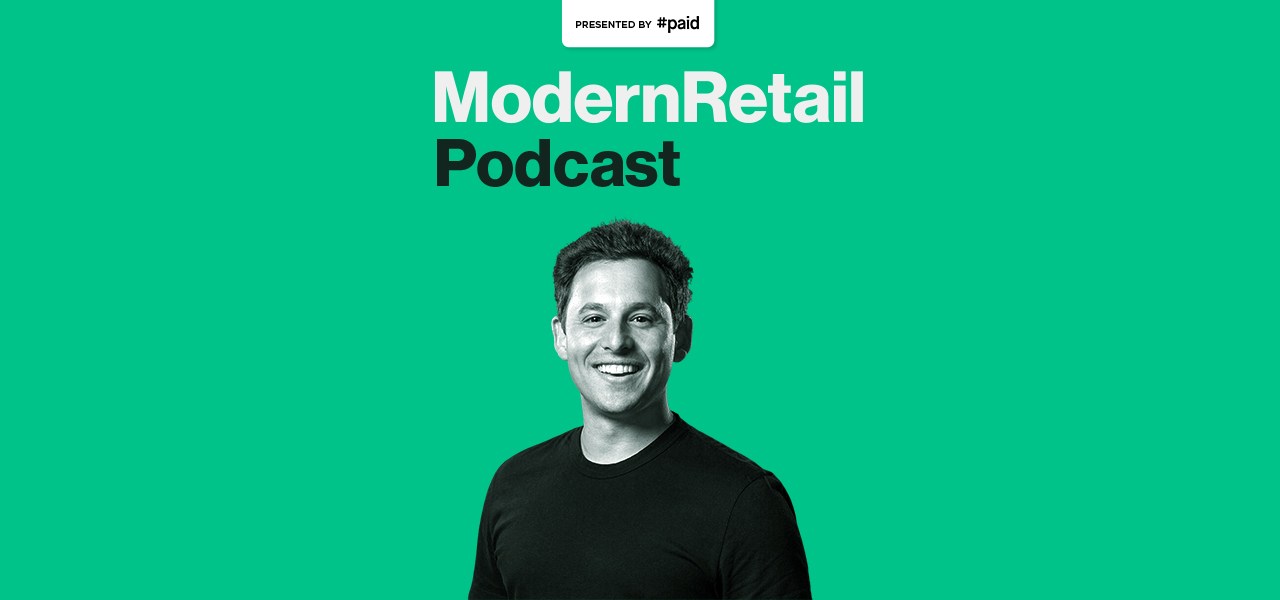‘A proxy for independent retail’: Shopify president Harley Finkelstein on how retail was revolutionized in 2020

Subscribe: Apple Podcasts | Stitcher | Google Play | Spotify | RSS
It’s easy to talk about retail doom and gloom, given a nearly year-long shutdown for brick-and-mortar stores and bankruptcy filings by many big name retailers. But Shopify president Harley Finkelstein is bullish on the sector’s resilience and potential — especially in e-commerce, which has grown by double digits in 2020 (even retail sales generally were up 6.6% in the January to November period this year, if you exclude gas, car and food services).
“In many ways Shopify is a proxy for independent retail,” Finkelstein said on the Modern Retail Podcast, adding that the four days from Black Friday to Cyber Monday this year generated $5 billion in sales on the platform. “And so what that tells me is consumers have completely shifted their buying preferences towards buying more from independent retailers and buying things from brands whose values reflect their own,” he said.
Shopify allows users to set up their own e-commerce websites. Last year, according to the Canadian company, it surpassed eBay as the second-biggest online retailer in the United States (behind Amazon, obviously).
“Our philosophy is to create more value for the partners we capture for ourselves that keeps growing,” Finkelstein said.
Here are a few highlights from the conversation, which have been lightly edited for clarity.
How Shopify reacted to the pandemic
“We told the company, ‘throw out all of your plans for 2020.’ And we asked all 6,000 people that work at Shopify to focus first and foremost on things that are going to help merchants and small businesses and brands survive and potentially thrive during this period. It felt very quickly like the year 2030 from what retail would look like then was pulled back to 2020. You had this massive, rapid, real time digitalization of retail. Every brick-and-mortar store that had not anticipated or maybe had resisted online commerce had to digitalize fast. And many of them did that on Shopify. We extended our Capital program. We’ve given out about a billion dollars of capital and cash advances and loans to small businesses. We expanded beyond the U.S. to the U.K. and Canada. We came up with a gift card product to help service-based businesses also get through the pandemic. So whether you’re a nail salon or you’re a dry cleaner, you can you can actually get some cash flow. We also increased some of the products that we were going to bring, we brought faster — features and functionality like curbside pickup and local delivery. And that really was the first couple of weeks of the pandemic.”
‘A proxy for independent retail’
“We’ve seen more entrepreneurs emerge than ever before. In Q3, the United States Census Bureau says that there were more business registrations in than any time since 2004. And retail — particularly the resilient side of retail — has done really well. Coming out of Black Friday, Cyber Monday, we saw over $5 billion of sales happen on Shopify in four days. And in many ways Shopify is a proxy for independent retail. And so what that tells me is consumers have completely shifted their buying preferences towards buying more from independent retailers and buying things from brands whose values reflect their own. You know, John Wanamaker created Wanamaker’s department stores in Philly in 1876. That was sort of this big, massive change: a lot of brands under one roof. I think the way that we look at that as being a turning point and a paradigm shift in retail — we’re going to look at the pandemic in terms of shift of retail as well.”
ESPN’s “The Last Dance“ got him thinking…
“There’s something so interesting when [Michael Jordan] talks about the building and the founding of the Jordan Brand with Nike. Effectively, he licensed his name to Nike and he got a royalty from it. And I always think about why that happened, and why it didn’t happen in a similar way to what Kylie [Jenner] has done? And the answer is distribution. Michael Jordan had no choice but to work with Nike, and he had no choice but to take a licensing fee as opposed to own the brand himself. But that’s over now. Now anyone that has an audience — whether it’s an athlete or celebrity or an artist or a singer — they’re able to go direct to the consumer themselves, and own the entire stack. You probably are sick of hearing the Kylie story, but the reason the story keeps coming up so much is because she built a billion dollar brand with eight people. That was not possible five years ago.”
